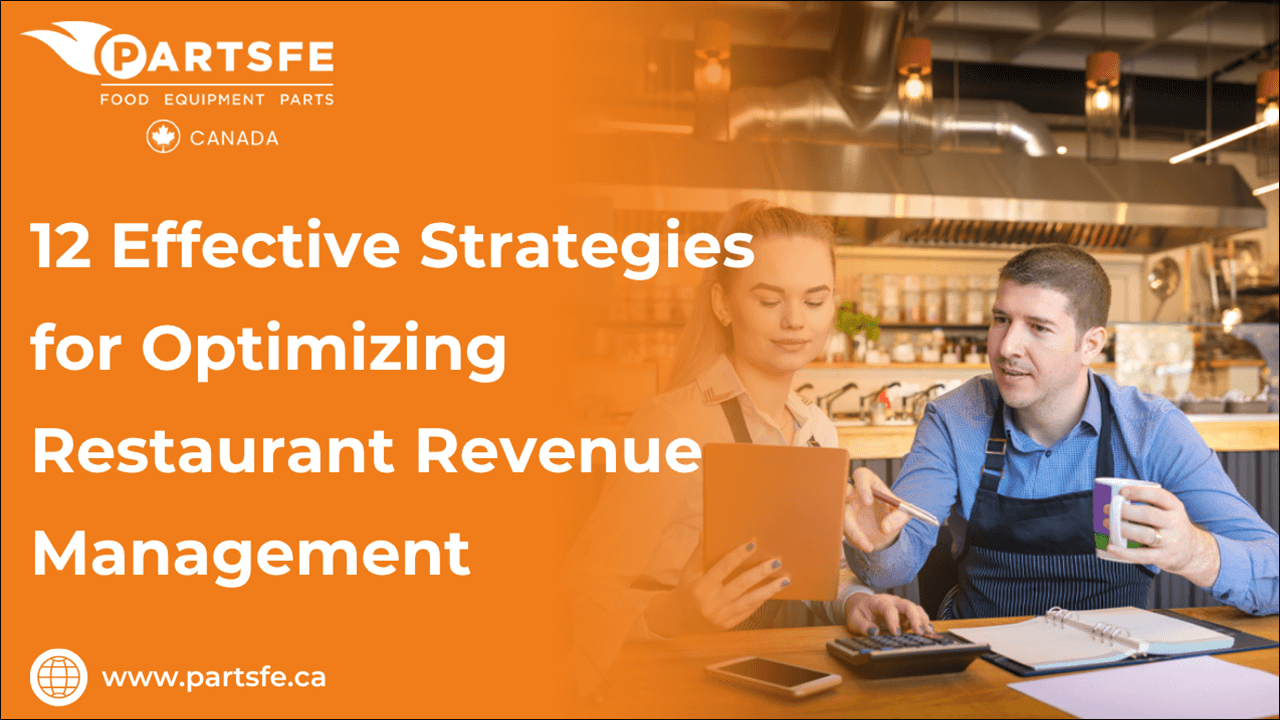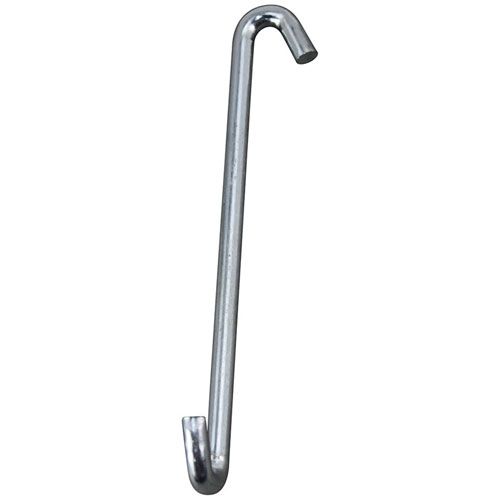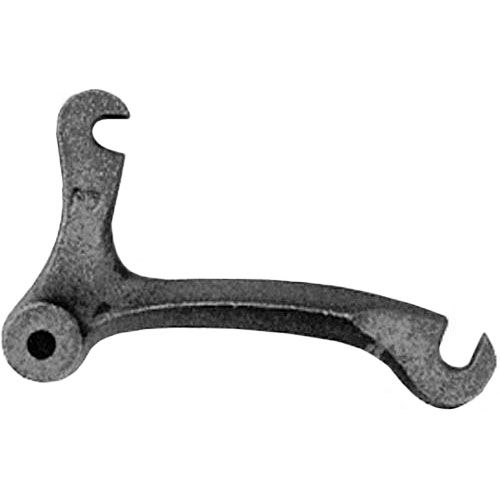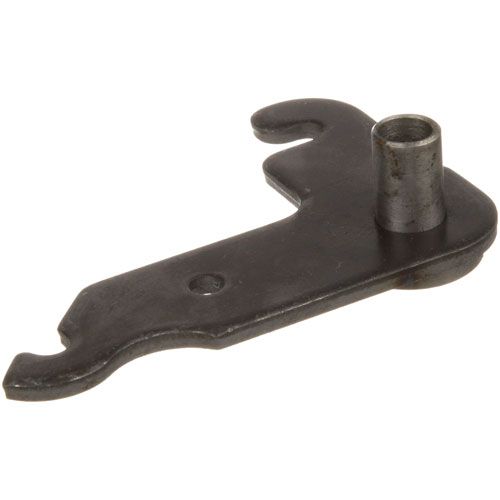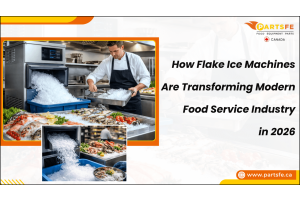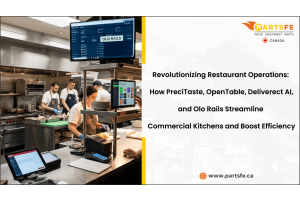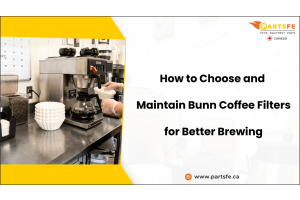12 Effective Strategies for Optimizing Restaurant Revenue Management
Running a successful commercial restaurant today goes far beyond serving great food and delivering excellent service. With razor-thin profit margins and unpredictable customer demand, mastering revenue management is essential for long-term success. Revenue management in restaurants means strategically managing pricing, seating, menu design, and customer flow to maximize profitability without compromising the guest experience. This involves understanding when and how to adjust prices, optimize operations, and engage customers effectively. Whether you run a small cafe or a large dining establishment, optimizing revenue requires a balance of data-driven decisions and operational savvy. In this guide, we’ll explore 12 effective strategies that restaurant owners and managers can implement to enhance profitability, increase customer satisfaction, and build a thriving business in a competitive market.
What Is Restaurant Revenue Management and Why Is Revenue Management Critical in Commercial Restaurants?
Revenue management in commercial restaurants involves analyzing and strategically managing various elements such as pricing, seating capacity, menu design, and customer demand patterns to maximize revenue without sacrificing customer satisfaction. Originally developed in the airline and hotel industries, revenue management techniques have proven equally valuable in hospitality settings like restaurants.
Why Is Revenue Management Critical in Restaurants?
-
Thin Margin: Typical restaurant profit margins range between 3-6%. This means even small improvements in revenue can significantly affect overall profitability. Careful management of pricing, capacity, and costs is essential to stay afloat.
-
Demand Fluctuations: Restaurants face highly unpredictable demand driven by factors like the day of the week, seasonality, local events, and even weather conditions. Managing this ebb and flow effectively is crucial.
-
Customer Experience: Overbooking or underpricing can result in poor guest experiences, longer wait times, or perceptions of low value, which damage the brand and reduce repeat business.
-
Competitive Market: With an abundance of dining options, restaurants must differentiate themselves on value, efficiency, and experience to maintain customer loyalty and attract new patrons.
Read this article on future trends in restaurant equipment to find out how evolving kitchen technology enhances revenue management.
12 Proven Strategies to Optimize Restaurant Revenue and Profitability
Maximizing revenue in a commercial restaurant requires more than just great food, as it demands a smart strategy and efficient operations. These 12 proven tactics help boost both profitability and customer satisfaction.
Implement Dynamic Pricing Based on Demand
Dynamic pricing involves adjusting menu prices or offers according to real-time demand levels. This approach allows you to maximize revenue by capitalizing on high-demand periods while attracting price-sensitive customers during slower times.
Benefits:
-
Analyze Peak Patterns: Use reservation and POS data to identify peak and off-peak periods.
-
Drive Off-Peak Traffic: Offer early bird specials, happy hour deals, or fixed-price menus during slower times.
-
Capture Premium Value: Experiment with tiered pricing for premium time slots or high-demand menu items (e.g., a higher price for weekend dinners).
Tip: You can capture a higher willingness to pay during busy times and increase coverage during quiet hours, balancing volume and revenue effectively.
Optimize Table Turnover Without Rushing Guests
Efficiently filling tables boosts daily covers, but rushing guests can harm their experience and discourage repeat visits. The key is managing table turnover subtly and skillfully.
Benefits:
-
Train Staff on Pacing Techniques: Train staff on pacing techniques, such as pre-bussing tables and offering timely drink refills to naturally speed the dining process.
-
Space Out Bookings Realistically: Use reservation software to space out bookings realistically, avoiding overcrowding.
-
Encourage Faster Ordering: Introduce limited-time or prix fixe menus during peak hours to encourage faster ordering and meal completion.
Tip: You’ll increase the number of guests served each day without compromising their satisfaction, which supports both revenue and brand reputation.
Leverage Data Analytics and POS Systems
Modern POS (point of sale) systems gather valuable data about customer behavior, sales trends, and menu performance. Harnessing this data can inform smarter, more profitable decisions.
Benefits:
-
Identify Sales Patterns: Analyze sales patterns to identify top sellers, slow movers, and menu items with the highest profit margins.
-
Create Personalized Campaigns: Use customer data to create personalized marketing campaigns and promotions.
-
Improve Forecasting: Forecast demand to improve staffing schedules and inventory purchases.
Tip: Data-driven insights reduce waste, improve menu profitability, and enable targeted marketing that boosts sales and customer loyalty.
Craft a Strategic Menu Design
Your menu is one of the most powerful tools for influencing customer choices and increasing revenue. Strategic menu engineering highlights your most profitable dishes and guides customers toward higher-margin items.
Benefits:
-
Highlight High-Margin Dishes: Position high-margin dishes in prime locations on the menu (top right or center pages).
-
Enhance Appeal with Language and Images: Use enticing, descriptive language and attractive photos to increase appeal.
-
Limit Menu Size: Limit the overall menu size to focus on popular and profitable dishes, reducing kitchen complexity and food waste.
Tip: A well-designed menu encourages customers to order items that increase the average check size and overall profitability.
Introduce Upselling and Cross-Selling Techniques
Upselling and cross-selling are effective ways to increase the average spend per customer by encouraging purchases of appetizers, drinks, desserts, or add-ons.
Benefits:
-
Train Servers to Suggest Naturally: Train servers to suggest complementary items naturally and enthusiastically (e.g., pairing wines or recommending desserts).
-
Use Visual Promotions: Use table tents, digital menus, or special boards to highlight promotions and pairings.
-
Offer Bundled Deals: Offer bundled deals like “appetizer + entree + dessert” packages to increase total spend.
Tip: These techniques increase revenue while also enhancing the guest experience through thoughtful recommendations.
Adopt Reservation and Waitlist Management Tools
Efficient reservation systems help prevent overbooking, reduce no-shows, and optimize seating capacity, leading to smoother operations and better revenue management.
Benefits:
-
Integrate Reservation and POS/CRM Systems: Use reservation platforms that integrate with your POS and CRM systems for seamless data flow.
-
Implement No-Show Policies: Implement no-show policies such as pre-payment or deposits for peak times to reduce empty seats.
-
Collect Guest Preferences: Collect guest preferences during booking to personalize future visits and build loyalty.
Tip: Improved table utilization, fewer no-shows, and enhanced guest relationships contribute to higher revenues and repeat business.
Offer Loyalty Programs and Repeat Customer Incentives
Repeat customers drive sustainable revenue growth. Loyalty programs incentivize return visits and increase customer lifetime value.
Benefits:
-
Implement Rewards Programs: Implement points-based or tiered rewards programs that offer discounts, freebies, or exclusive experiences.
-
Send Targeted Promotions: Send targeted promotions based on visit frequency, customer preferences, or anniversaries.
-
Use Digital Tracking: Use mobile apps or digital cards to simplify tracking and redemption of rewards.
Tip: A loyal customer base results in steady revenue and reduces the cost of acquiring new customers.
Diversify Revenue Streams Beyond Dine-In
Relying solely on dine-in customers can be risky. Expanding into other revenue streams creates new income opportunities and provides buffers against market changes or disruptions.
Benefits:
-
Expand Takeout, Delivery, and Catering: Develop takeout, delivery, and catering options tailored to your menu and customer base.
-
Host Events and Classes: Host private events, cooking classes, or wine tastings to attract different audiences.
-
Sell Branded Merchandise: Sell branded merchandise or packaged food items for additional income and marketing.
Tip: Multiple revenue channels increase overall income potential and customer reach.
Manage Inventory and Reduce Food Waste
Food costs are a major expense in restaurants. Effective inventory management and waste reduction improve margins and allow greater flexibility in pricing and promotions.
Benefits:
-
Use Inventory Software: Use inventory management software to track ingredient usage and waste in real time.
-
Forecast Demand Accurately: Forecast demand accurately to avoid over-ordering and spoilage.
-
Implement Portion Control: Implement portion control and find creative ways to repurpose surplus ingredients (e.g., daily specials).
Tip: Lower food costs improve your profit margin and support sustainable operations.
Monitor Labor Costs and Staff Scheduling
Labor typically represents one of the highest expenses in restaurants. Optimizing staffing based on demand is crucial for maintaining cost efficiency without sacrificing service quality.
Benefits:
-
Schedule Based on Demand: Schedule staff according to forecasted demand and historical sales data.
-
Cross-Train Employees: Cross-train employees to cover multiple roles, increasing flexibility and efficiency.
-
Use Labor Management Tools: Utilize labor management tools to track hours, overtime, and productivity.
Tip: Balanced labor costs lead to better control over expenses while ensuring excellent guest experiences.
Use Seasonal and Local Ingredients
Incorporating seasonal and locally sourced ingredients can improve food quality, reduce costs, and appeal to diners preferences for freshness and sustainability.
Benefits:
-
Build Menus Around Seasonal Ingredients: Build menus around ingredients that are in season and locally available.
-
Promote Freshness and Sustainability: Highlight the freshness and sustainability aspects in your marketing materials.
-
Adjust Pricing for Premium Offerings: Adjust prices to reflect the premium nature of seasonal offerings.
Tip: Seasonal menus enhance your brand image, attract discerning customers, and provide opportunities for margin improvement.
Engage in Strategic Marketing and Promotions
Effective marketing increases foot traffic and strengthens brand awareness, which directly impacts revenue.
Benefits:
-
Run Targeted Social Media Campaigns: Run targeted social media campaigns focused on local demographics and interests.
-
Partner with Influencers and Community: Partner with food bloggers, influencers, or community events to raise your profile.
-
Organize Special Events: Organize limited-time offers, themed nights, or special events to drive off-peak traffic.
Tip: Consistent and strategic marketing attracts new customers, encourages repeat visits, and maximizes sales during slow periods.
Check out this article on cybersecurity in the restaurant industry to learn how protecting digital systems supports revenue optimization.
Final Thoughts
Optimizing restaurant revenue management is not just about increasing prices or cutting costs, it's about making smarter, more strategic decisions that align with customer expectations and operational efficiency. By implementing these 12 proven strategies, restaurant owners and managers can better navigate demand fluctuations, improve table turnover, enhance menu profitability, and diversify income streams. Ultimately, success comes from a balanced approach that leverages technology, empowers staff, and delivers exceptional dining experiences. With consistent analysis, adaptation, and focus on both revenue and guest satisfaction, any restaurant can position itself for long-term growth in a competitive market.
Need top-quality parts to keep your commercial kitchen operating at its best? PartsFeCA offers essential components like commercial ovens, refrigeration compressors, and ventilation fans from reputed brands such as Vulcan, Hobart, and Greenheck. Count on PartsFeCA for quality parts that keep your restaurant running smoothly and efficiently!
FAQs
What is the most important way to maximize revenue in a restaurant?
The most important way to maximize revenue is by optimizing your menu and pricing strategy to highlight high-margin items and encourage higher spending. Pair this with efficient table turnover and upselling techniques to increase the average check size without sacrificing the guest experience.
How to drum up business in a restaurant?
Use targeted marketing tactics like local SEO, social media promotions, and loyalty programs to attract new and repeat customers. Hosting events, offering special deals, and partnering with influencers or food apps can also drive foot traffic and brand visibility.
How to boost restaurant sales?
Train staff to upsell and cross-sell menu items naturally, while using data from your POS system to identify and promote best-sellers. Additionally, expanding services such as delivery, catering, or private dining can open new revenue streams and increase overall sales.

